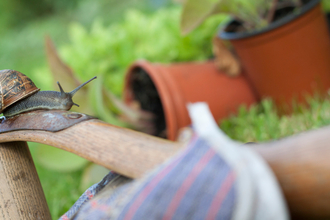Nest boxes don’t just provide extra habitat, they provide vital replacement habitat for natural nesting sites lost due to the destruction of woodlands and hedgerows, the loss of traditional farm buildings such as barns and changes to the way we maintain our homes.
Ticking all the right boxes
Al Greer

Chris Gomersall/2020VISION
Most people are familiar with the simple nest box design with a hole in the front. When carefully located these are ideal for species including blue tits and great tits, especially in areas without established trees, shrubs and mature hedgerows. Beyond this basic design nest boxes now come in a dizzying array of shapes and sizes to suit the requirements of different species from robins and wrens to house sparrows and house martins; as well as large species such as owls and woodpeckers.
Once you’ve decided to put up a box you’ll need to think about the best place for it. Although you might be tempted to locate it where it will be easiest to observe, the priority should always be the safety and comfort of the birds that will hopefully take up residence. It needs to be sheltered from the worst of the weather and placed so as not to be unduly at risk from predators and bearing in mind that you’ll need to clean out the box each year its best not to place it too high. For many species height isn’t that critical anyway; wild birds are adaptable and take advantage of what’s on offer but it’s best not to put it any lower than a metre above the ground.
If sheltered by nearby buildings or trees the direction the box faces won’t matter too much, but in exposed locations the entrance should be away from the prevailing wind. It is also worth tilting the front of the box down slightly to prevent rain getting in. To avoid causing squabbles between neighbours don’t place more than one of the same type of box close together and always try to ensure that the box isn’t easily accessible to cats via overhanging branches or nearby sheds or fences. To reduce the threat from predators such as squirrels, boxes with metal re-enforcement around the hole are worth the investment and its best to avoid boxes with perches. Birds simply don’t need them and perches can make it all too easy for squirrels and other predators such as weasels to get a foothold, putting the eggs and chicks at greater risk.


Amy Lewis
Once installed you’ll hopefully be rewarded with close up views of adults birds inspecting their prospective new home and with a bit of luck you’ll be able to watch a real life family drama unfold; from parents frenetically bringing food for voracious offspring to the chicks themselves emerging from the relative safety of the box in late spring or early summer.
For many species of bird well-located nest boxes can be the difference between success and failure in the breeding season and the earlier boxes are installed the better. If asked to advise on the best time of year to put up nest boxes I would always say right now. So, whilst for some species the traditional Nest Box Week period might be cutting it a bit fine, now is better than never and its worth bearing in mind that boxes left in your shed or in the shops are no good for birds at all! If you haven’t got a box in your garden why not make 2019 the year this changes?
Further details of how to attract wildlife to your garden, including plans for simple nest boxes can be found at www.nottinghamshirewildlife.org/get-involved




